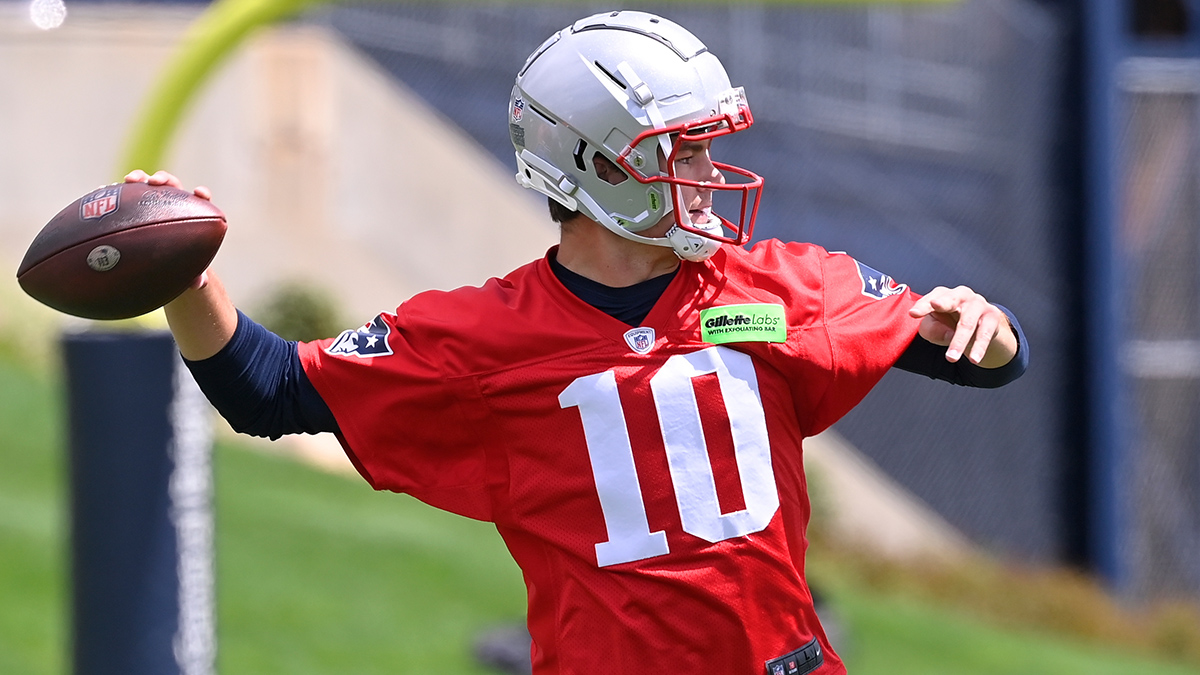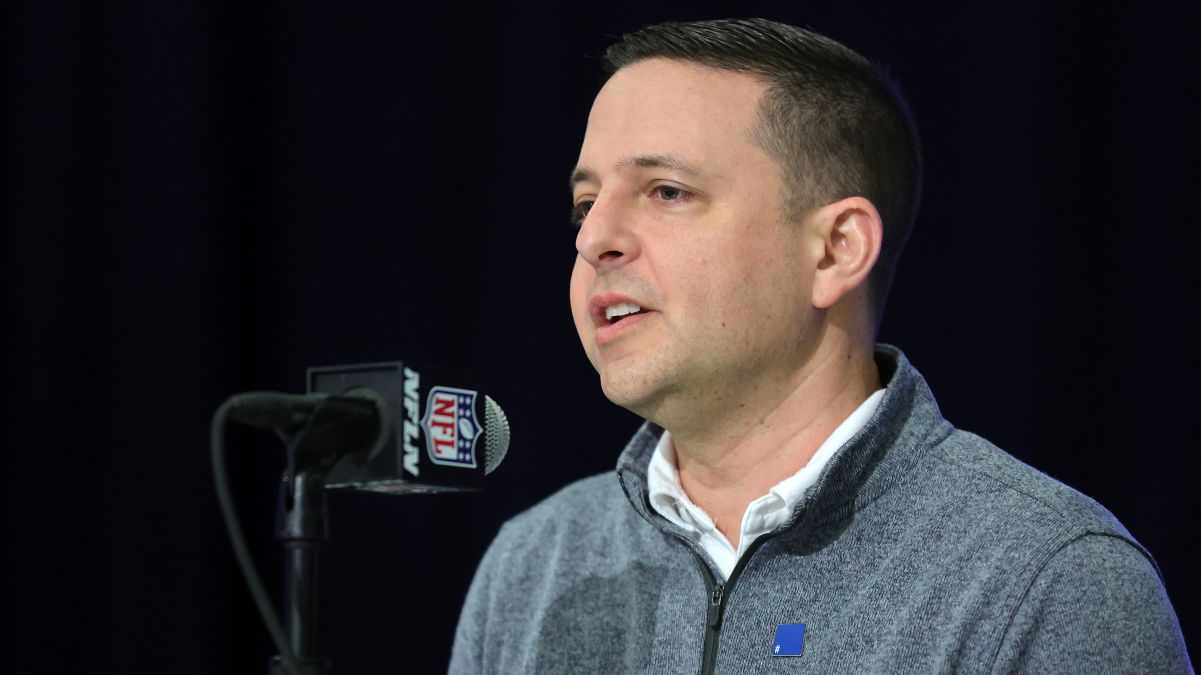BALTIMORE — Marlon Humphrey was done.
He'd played every defensive snap for the Ravens, and after one Patriots drive in the second half he decided he'd had it with what Josh McDaniels and Tom Brady were throwing at him and his teammates.
"I ain't going to lie," Humphrey said, via WEEI's Ryan Hannable, "that no-huddle was killing us. When we got to the sideline, we were like, 'Yo, we have to do something.' When they were doing that no-huddle, they were almost unstoppable at one point."
The operative phrase there would be, "at one point."
The Patriots could not move the football early in the game. They fell behind by three scores in the first half and eventually lost, 37-20. But in the process of absorbing their first defeat of the season, the Patriots might've discovered their offensive identity.
They used one running back, one tight end and three receivers for the entirety of the game. They deployed spread formations with four or five pass-catchers split out wide. They used tempo — that no-huddle attack Humphrey despised — throughout, wearing on the Ravens defense.
It was a far cry from the ground-and-pound offense that brought a sixth Lombardi Trophy to Foxboro nine months ago, but there were moments when it hummed.
New England Patriots
"Obviously we moved the ball well," receiver Phillip Dorsett said. "We know we can move the ball well. But it wasn't good enough. Obviously we made some mistakes. At the end of the day. We gotta play better."
The Patriots averaged 5.3 yards per play in the game Sunday night. It was their fourth-highest figure in that category this season. And if you were to remove the seven sleepy plays the Patriots ran for four total yards in the first quarter, then that yards-per-play number would be 5.8, which would've tied Week 2 in Miami as their second-most efficient game of the season.
ROLLING WITH "11"
We recently laid out the possibility that the Patriots would roll with lighter offensive personnel groupings moving forward — particularly if N'Keal Harry was in the mix. But the Patriots didn't even need to activate their first-round rookie receiver in order to make changes to their attack. On Sunday, they chose to use essentially the same crew of offensive bodies play after play after play.
Dorsett missed one snap during the first Patriots drive of the game, subbing out for Jakobi Meyers. Otherwise, he was in there with Julian Edelman, Mohamed Sanu and Ben Watson on every down. The Patriots rotated running backs James White, Rex Burkhead and Sony Michel through the lineup, but none of them ever played together simultaneously.
On all 67 offensive plays in the game for the Patriots — no matter where they were on the field, no matter the down-and-distance scenario — they used their 11-personnel package. This just three weeks after Brady marveled at how the Patriots were forced into running 11 personnel for an entire half against the Giants, saying that they hadn't done that in his 20 years with the team.
But the Patriots weren't necessarily forced into running "11," as they were against the Giants because of injuries.
Tight end Ryan Izzo was active but did not play an offensive snap. Meyers could've played more had the Patriots wanted to use more receiver-heavy groupings. Activating N'Keal Harry to the 46-man game-day roster would've allowed for more 10-personnel packages, with four receivers, but he was a healthy scratch. The Patriots have used Brandon Bolden, Elandon Roberts and James Ferentz as fullbacks this season yet opted not to use any of them in that role Sunday.
"Our coaches always put a plan together to help us win," Watson said. "That was the goal. That's what we thought gave us the best opportunity, obviously. It didn't turn out that way, but still as players you feel like if you were able to execute exactly what you were coached to do, what we practiced, we would've had a better outcome."
The Patriots might've worn down their receivers and 38-year-old pass-catching tight end, but that grouping looked like it got who McDaniels considered his best players on the field. Whatever the reason, it was a dramatic shift. McDaniels, according to Sharp Football Stats, called for 11-personnel packages on just 46 percent of snaps going into Week 9, which was the fourth-lowest percentage in football.
SPREAD IT OUT
The Patriots have long liked to mix up the personnel packages and formations they throw at opponents. Two backs in the backfield . . . One tight end in-line, one in the slot . . . A tight end in the backfield as a fullback . . . This year they ran 20 percent of their plays out of 21 personnel, 11 percent of their plays out of "12," eight percent out of "10," and eight percent out of "20."
They get creative.
On Sunday, their options were limited as they played with the same 10 or 11 players on most snaps. But once they got going, those options were productive.
McDaniels went to more spread offense looks, aligning four or five pass-catchers out wide and detached from the formation. They allowed Brady to adjust protection schemes, set players in motion, remove players from route combinations and enter them into the pass-protection plan.
Then it was up to Brady to make the throw.
"He's Tom Brady for a reason," Watson said. "To be able to handle that, to be able to get us into a favorable position, a favorable play in a situation like that, to be able to recognize defenses and the protection, audible. That's why he is who he is. That's why he's special."
TEMPO TOOK HOLD
As ineffective as the Patriots running game had been this season (3.2 yards per carry entering Week 9), they were never going to totally abandon that phase of their offense. Brady, McDaniels and others tell us annually — many times over — that they want to be balanced.
Not that that means an even 50-50 split between their run plays and their pass plays. But they'd like the option to do a variety of different things: run inside, run outside, pass short, pass deep, pass to the middle of the field, pass to the boundaries, play-action pass, screen, draw. You get the idea.
Going no-huddle as often as they did Sunday night — it began in the first quarter — seemed like a Patriots strategy that had the fourth quarter and their running game in mind.
If they could go no-huddle and squeeze as many plays as possible out of their offense, that might have a cumulative effect later in the game, wear down John Harbaugh's defense, and bring to life a slumbering rushing attack. The one half of ground-game success the Patriots had had this season prior to running for 4.4 yards per carry against the Ravens was in the second half of Week 5 against an exhausted Redskins defense.
The Patriots ran a season-low 17 times out of 65 total plays in Baltimore. But they ran eight times in the second half for 43 yards, a 5.4 yards per carry average.
The hurry-up — judging by Humphrey's comments — appeared to pay dividends. They used it to set themselves up for a pair of second-quarter field goals. They used it during their third-quarter touchdown drive when they ran seven times.
But the no-huddle was a catch-22 at M&T Bank Stadium. Edelman looked gassed in the third quarter when he had a fumble returned 70 yards by Humphrey for a touchdown. The no-huddle also probably helped the Patriots get smothered in the time of possession battle. They had the ball for 2:12 in the first quarter and only 22:59 in the game.
"We know we're a well-conditioned team," Dorsett said. "We know we can do it. It's just something that we did. I think it worked for us. Obviously we didn't win because they played better than us. That's that."
"That was just our plan," Watson said. "That's what the coaching staff came up with. That was the plan for us. That was the way we wanted to play. We just didn't execute it very well early in the game. By the time we started executing, we were already down. It made it difficult."
THE NEW OLD IDENTITY?
The fact that the Patriots were behind in the game surely skewed their run-pass splits, but by spreading things out, throwing more, and going no-huddle, the Patriots offense resembled something closer to a modern-day college attack than the old-school running game that carried them late last season.
Consider what McDaniels told NFL Films after winning Super Bowl LIII.
"One of the things that I'm so thoroughly impressed with Bill [Belichick] on," McDaniels said at the time, "is his ability to adapt and evolve. He said, 'If you keep holding onto what you'd rather be — no huddle, spread formations, 34 points a game — then you're probably going to end up regretting a lot of things at the end of the year.'
"What are we really good at? What's the most consistent part of our team offensively? And then you commit to it. We had been a pretty decent running football team. It was something we felt like our personnel fit.
"It's gonna be I-formation, running a lead play, gaining six yards. Line up. Do it again. You gotta be content trying to win this way because this is the way we can win. I think our team really embraced that. We were adaptable."
Right now, McDaniels' personnel fits a more spread style. His most talented offensive weapons reside at the receiver position — a spot that will get a little more talented whenever Harry is in uniform. McDaniels' best player is still Brady.
To move the football Sunday, McDaniels leaned on his quarterback and his receivers. Sanu — who broke out after his first full week of practice with his new team — caught 10 passes for 81 yards. Edelman caught 10 more for 89 yards. Together they accounted for 67 percent of Brady's completions and 63 percent of his passing yards.
The overall execution of the offense clearly wasn't where the Patriots wanted it. They were 5-for-13 on third down. They were 2-for-4 in the red zone. A Brady grounding penalty and a Marshall Newhouse holding call killed one drive. A Shaq Mason hold pushed another back.
Players weren't exactly overflowing with optimism given the result.
"If feels like we didn't make strides for long enough," Watson said. "Against a good team you have to play well for the whole game. Three quarters, two and a half quarters, one quarter isn't going to be enough. We can look at the good in those quarters, but we can also say, 'Hey, we needed to be much better for the whole 60 minutes.' "
While far from a 60-minute performance, what the Patriots offense did show in spurts — a willingness to accept a hurry-up-and-spread-it-out approach — might be a sign that they're on their way to making another mid-season switch to settle on an identity.
Things will be tinkered with during the bye week, no doubt. But after two months of changing plans, changing personnel and general inconsistency, the Patriots will welcome any and all breakthroughs.
It wasn't pretty. But they may have witnessed one Sunday night.
Click here to download the new MyTeams App by NBC Sports! Receive comprehensive coverage of your teams and stream the Celtics easily on your device.


